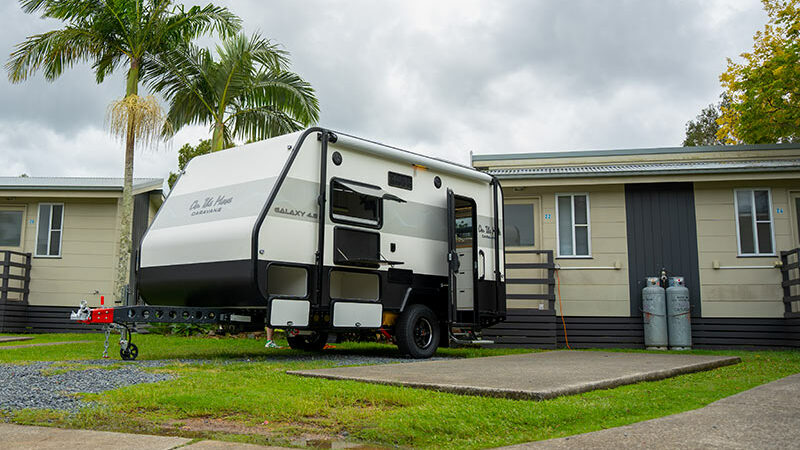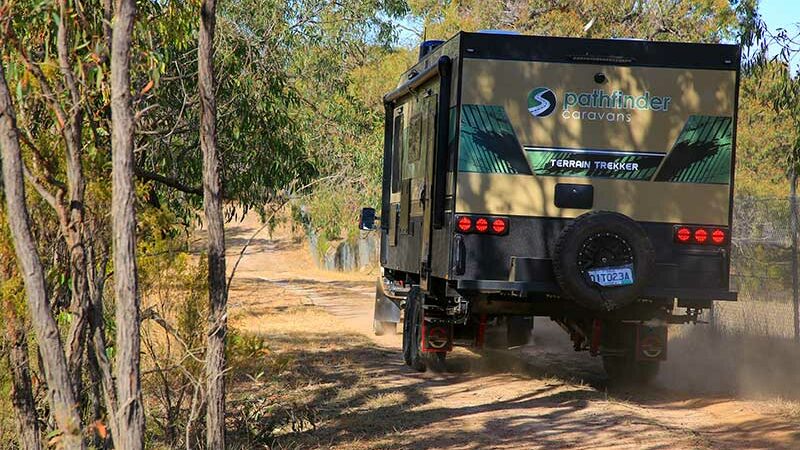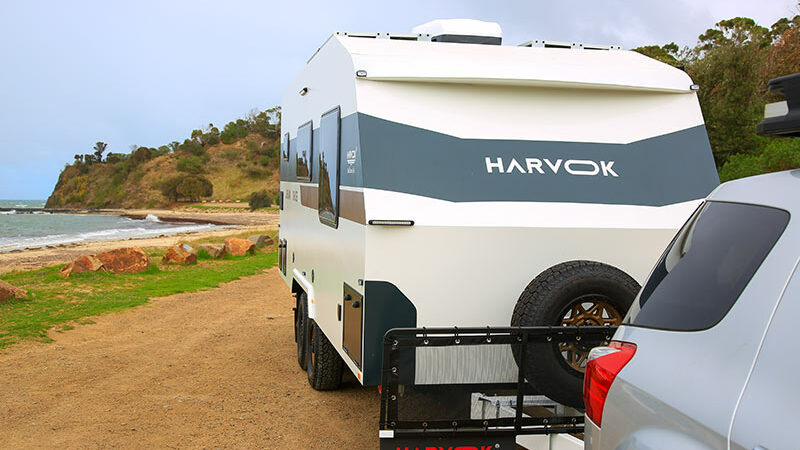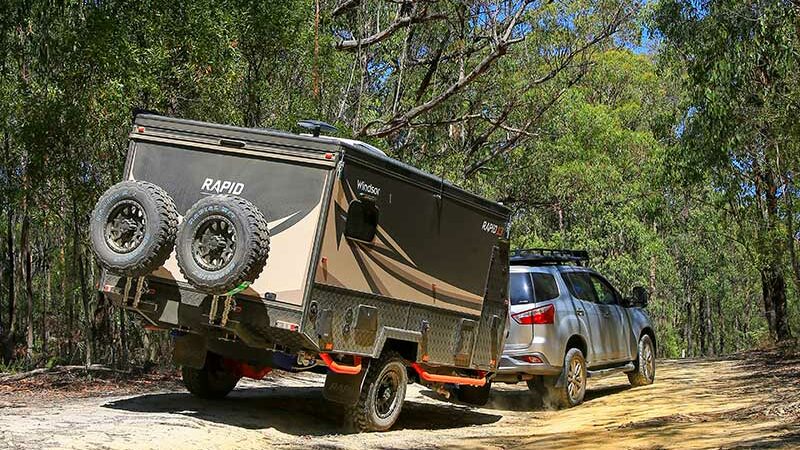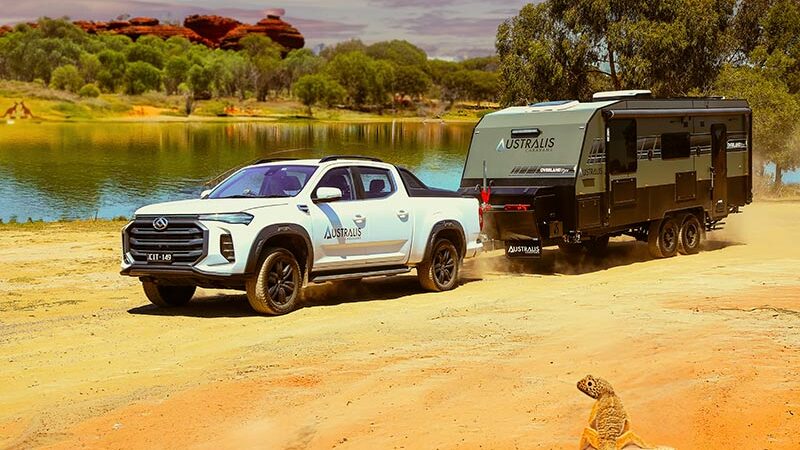Isuzu D-MAX: Long Term Test Wrap-Up
Here at GoRV, we had an Isuzu D-MAX LS-U+ for six months in order to conduct a long-term test under a variety of conditions.
The D-MAX has become one of Australia’s best-selling vehicles. In 2022, it was the seventh best-selling car overall, out of 450 cars on sale. In the ute category, it sold 24,336 D-MAX utes – a slight drop from the year before, when Isuzu Ute Australia sold 25,117.
But how did it perform on a long-term basis? Were there any dramas or bug bears? Read on…
D-MAX ENGINE
Isuzu overhauled the D-MAX in 2020, giving it a new engine and a suite of electronic safety features not seen before in a ute. It was the first serious update to the vehicle since the second generation D-MAX was launched in Australia in 2012.
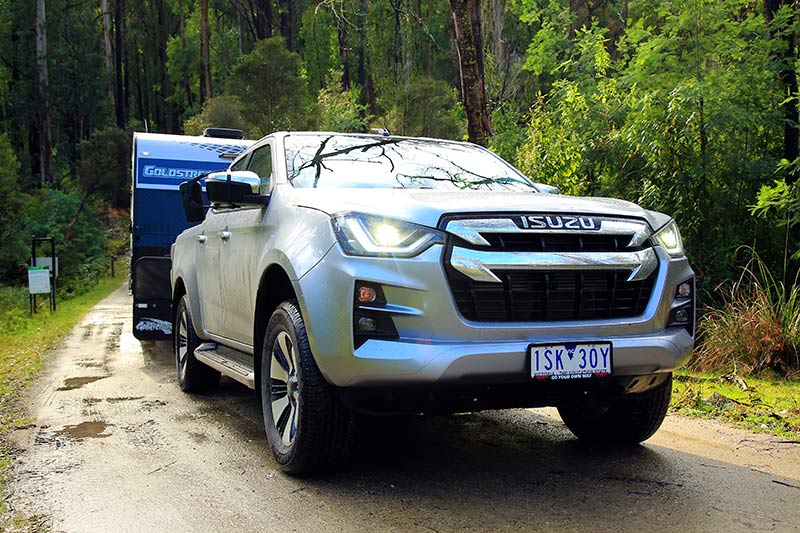 The LS-U+ sits between the LS-U and the flagship X-TERRAIN. It comes with a few extra features over and above what you’ll find as standard in the LS-U.
The LS-U+ sits between the LS-U and the flagship X-TERRAIN. It comes with a few extra features over and above what you’ll find as standard in the LS-U.
The 3L turbodiesel engine produces 140kW at 3600rpm and a peak torque figure of 450Nm between 1600 and 2600rpm. In my experience, it’s a terrific engine. That dreaded turbo lag is there but it’s minimal – it takes just a brief moment for the turbo to spool up, but when it does, the vehicle accelerates quickly. When towing close to 3000kg, the vehicle has no issues finding the best gear and the engine has the power and torque in reserve to call upon.
How well the vehicle will go hauling a van up a steep incline will obviously depend on the weight being hauled. Up around the 3000kg mark, the vehicle will need to drop back a gear or three and hunch its shoulders, but it’ll get there. Having said that, when towing about 2400kg up a steep hill, the D-MAX did it with guts to spare.
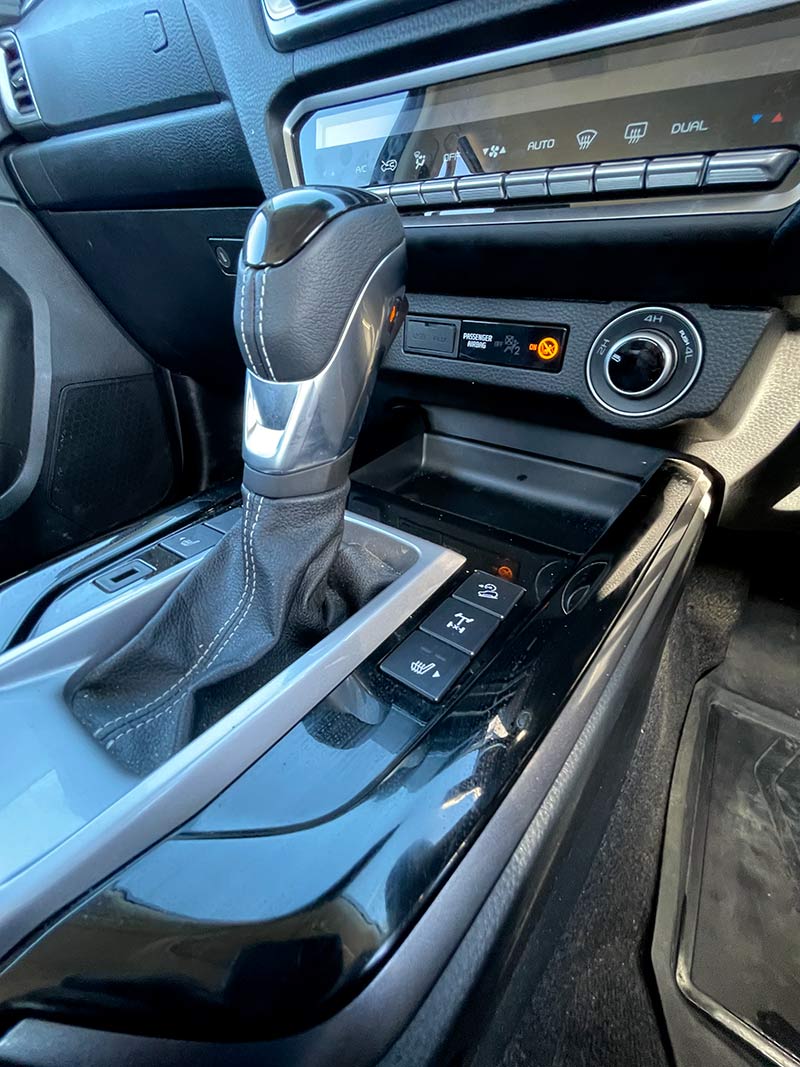 The grade logic transmission means the vehicle will shift down when descending steep hills in order to utilise engine compression braking, or hold a lower gear to ensure the engine delivers maximum torque when ascending a steep incline.
The grade logic transmission means the vehicle will shift down when descending steep hills in order to utilise engine compression braking, or hold a lower gear to ensure the engine delivers maximum torque when ascending a steep incline.
TOWING
The D-MAX’s origins are as a work vehicle designed to carry big loads in the tray. Therefore, the three-leaf rear suspension is fairly stiff; however, the ride is still reasonably supple, which was a welcome surprise. The ride felt even more settled with a load resting on the towbar. I found that around 200kg worth of ball weight was easily accommodated, without the rear end sagging noticeably.
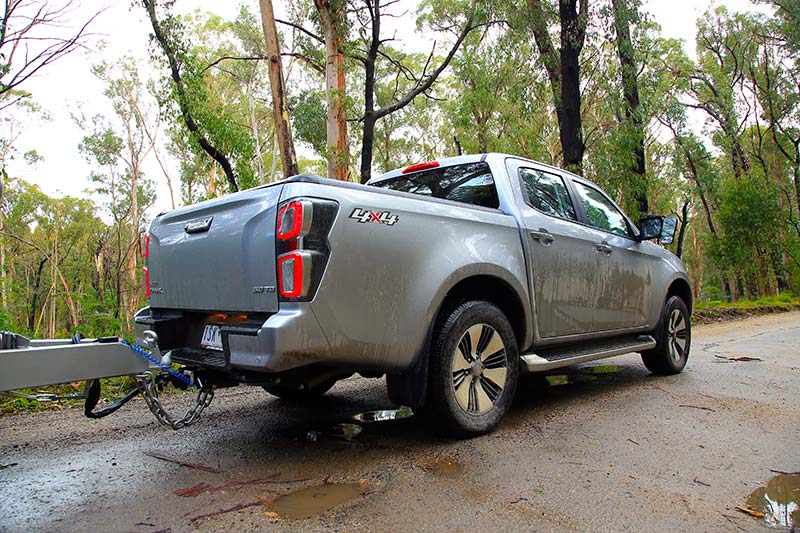 The D-MAX is rated to tow up to 3500kg, with 350kg on the towbar. It’s kerb (unladen) weight is 2112kg while the GVM is 3100kg. This provides the vehicle with a payload capacity of 988kg – not bad. As always, though, it’s important to factor in the Gross Combination Mass (GCM). This vehicle is rated to 6000kg GCM. So, if you were to tow bang-on 3500kg worth of van (including the ball weight), the vehicle itself could be loaded to 2500kg – a payload allowance of 388kg. (This calculation is based on figures provided by Isuzu and doesn’t account for the weight of the towbar and any other optional accessories you might add, which would have to be factored in as well.)
The D-MAX is rated to tow up to 3500kg, with 350kg on the towbar. It’s kerb (unladen) weight is 2112kg while the GVM is 3100kg. This provides the vehicle with a payload capacity of 988kg – not bad. As always, though, it’s important to factor in the Gross Combination Mass (GCM). This vehicle is rated to 6000kg GCM. So, if you were to tow bang-on 3500kg worth of van (including the ball weight), the vehicle itself could be loaded to 2500kg – a payload allowance of 388kg. (This calculation is based on figures provided by Isuzu and doesn’t account for the weight of the towbar and any other optional accessories you might add, which would have to be factored in as well.)
Of course, this equation also relies on the van being exactly 3500kg, which is unlikely. Tow 3400kg instead, for example, and the payload allowance of the vehicle would increase to 488kg, and so on.
In comparison to the lower-spec LS-U, which it is based on, the LS-U+ gets a towbar receiver and tub liner as standard, and an additional 100kg worth of GVM as part of the 2022 update – particularly useful for caravanning.
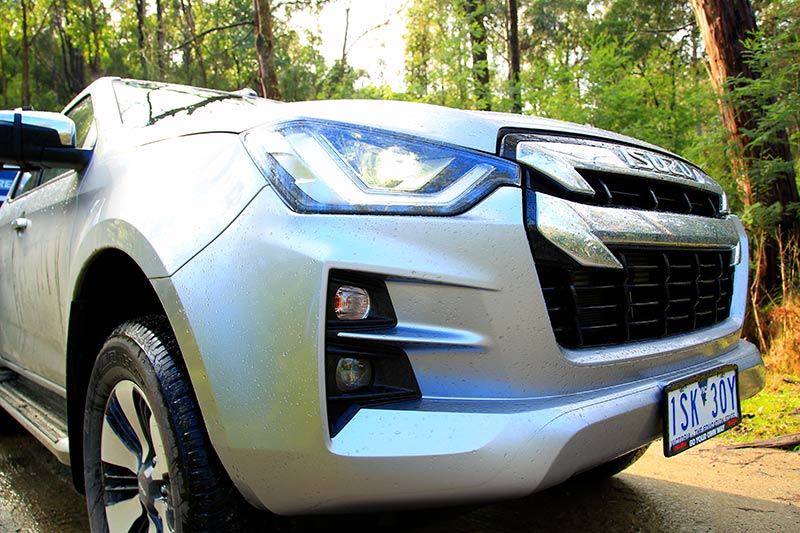 As part of the 2020 overhaul of the D-MAX, Isuzu gave the vehicle new independent front suspension with a higher spring rate intended to improve composure and cornering stability. I towed numerous vans across a variety of terrain, from undulating gravel to mud to the open highway. At all times, the ride felt stable and predictable – which is what you want – even when towing close to 3000kg. Nothing about the way the D-MAX handled caused me concern – it shoulders the weight of large, heavy vans well.
As part of the 2020 overhaul of the D-MAX, Isuzu gave the vehicle new independent front suspension with a higher spring rate intended to improve composure and cornering stability. I towed numerous vans across a variety of terrain, from undulating gravel to mud to the open highway. At all times, the ride felt stable and predictable – which is what you want – even when towing close to 3000kg. Nothing about the way the D-MAX handled caused me concern – it shoulders the weight of large, heavy vans well.
Externally, you’ve got rear parking sensors, LED headlights and fog lights, 18in alloy wheels, and one optional feature that I quite liked is the electric roller tonneau cover for the tub. Press a button on the supplied fob and the cover will open or close as required.
A feature that should be of interest to vanners: the vehicle gets a 120A alternator to deliver ample power for appliances, such as a portable fridge.
IDAS SAFETY SYSTEM
IDAS collectively describes a range of sophisticated safety features offered by this vehicle. Lane Keep Assist, Lane Departure Prevention and AEB with Turn Assist are its key features, but it also provides Traffic Sign Recognition and a Rear Cross Traffic Alert, among others features.
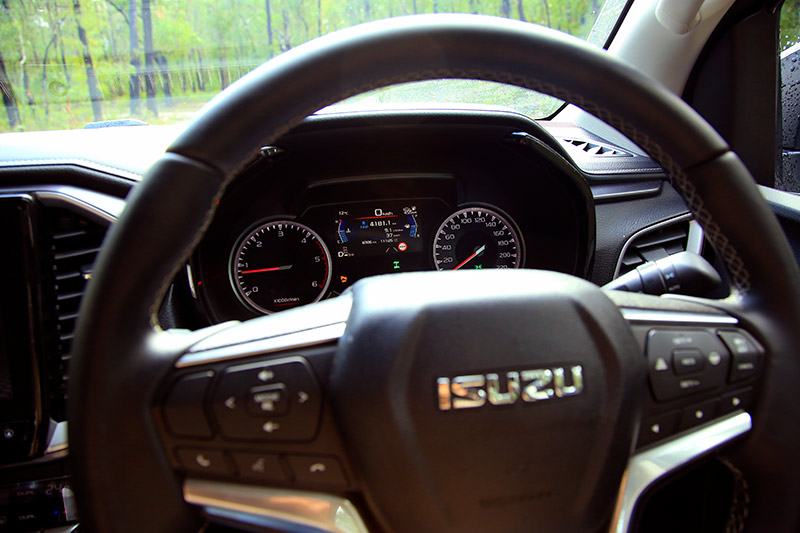 I can’t fairly criticise this system. It did everything it is intended to do. I particularly noticed that the Traffic Sign Recognition feature worked well, except in areas of poor sign placement. Put it this way: if the traffic/speed sign has been positioned properly, the system will recognise it. There were some occasions, especially in areas of road works, when it didn’t recognise the signs, but I put that down to poor placement of the temporary signs.
I can’t fairly criticise this system. It did everything it is intended to do. I particularly noticed that the Traffic Sign Recognition feature worked well, except in areas of poor sign placement. Put it this way: if the traffic/speed sign has been positioned properly, the system will recognise it. There were some occasions, especially in areas of road works, when it didn’t recognise the signs, but I put that down to poor placement of the temporary signs.
The biggest thing to get used to is the way the vehicle will automatically position itself back towards the centre of the lane should you veer a little too close to the centre line – you can even feel the wheel ‘tug’ to the left. It’s a little unnerving but you quickly get used to it – and might one day be thankful for it.
INTERIOR
The LS-U+ comes with a leather-accented interior trim, which I was quite grateful for since it is so easy to clean and maintain. Features include a 9in infotainment screen with Apple Car Play and Android Auto, satellite navigation and even voice recognition. The system is quite user-friendly.
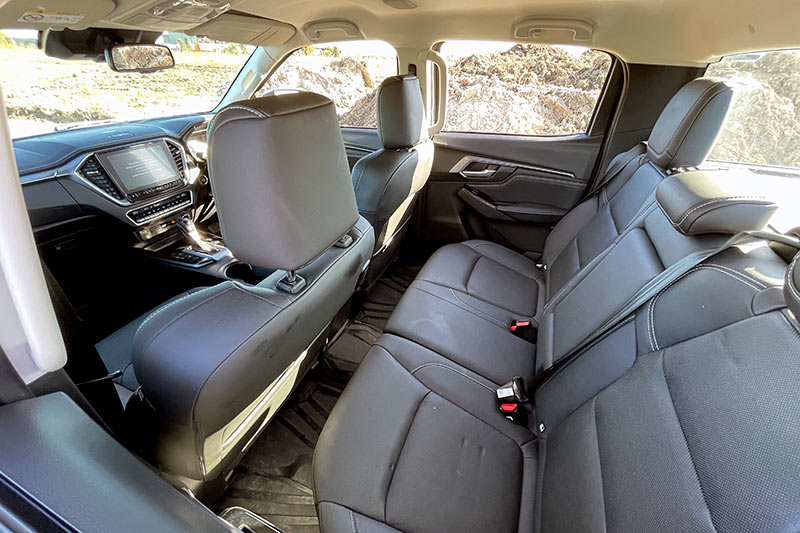 The stylish interior also includes a premium black leather steering wheel and gear knob, pop-out cup-holders in front of the air vents to help keep your drinks cool, rain-sensing windscreen wipers, dual-zone climate control… the list goes on.
The stylish interior also includes a premium black leather steering wheel and gear knob, pop-out cup-holders in front of the air vents to help keep your drinks cool, rain-sensing windscreen wipers, dual-zone climate control… the list goes on.
While the D-MAX could fairly be described as a workhorse, the interior offers an excellent balance of feature and comforts. This vehicles commercial origins aren’t obvious at all – it certainly ‘feels’ like you get what you pay for. I didn’t mind the seat warmers up front, either!
FUEL CONSUMPTION
I conducted a couple of fuel tests with the Isuzu D-MAX, both hitched and unhitched. When driving solo over a distance of 282.2km, the vehicle drank 21.28L of diesel, which equates to 7.54L/100km. Some readers concurred, even writing in to tell us how thrilled they had been with the fuel efficiency of their own D-MAX.
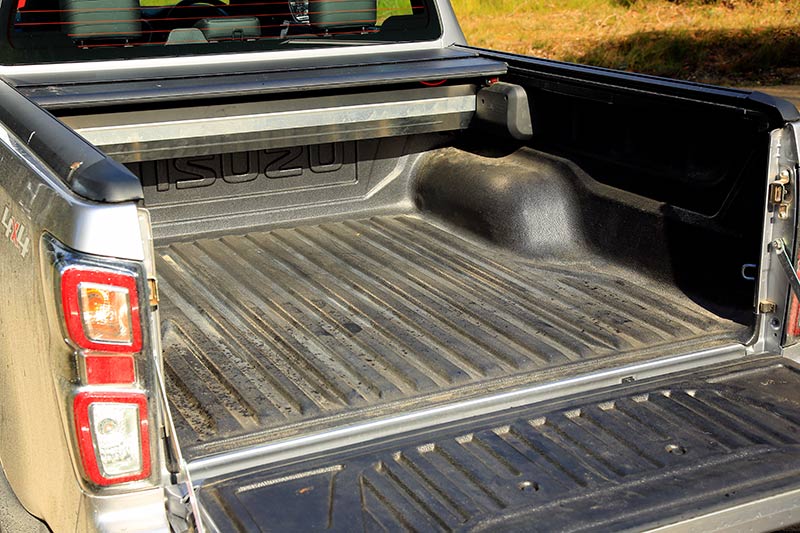 When towing a van weighing about 2500kg over 153.6km, the D-MAX used 25.01L of diesel, equating to 16.28L/100km – not bad, really.
When towing a van weighing about 2500kg over 153.6km, the D-MAX used 25.01L of diesel, equating to 16.28L/100km – not bad, really.
SUMMING UP
No, the Isuzu D-MAX LS-U+ doesn’t offer the same torque and power figures as some of its competitors, but it is still a very serious proposition as a tow vehicle. After using it to tow a wide variety of vans over a period of six months, I have no hesitation in recommending it to caravanners in search of a new tow tug.
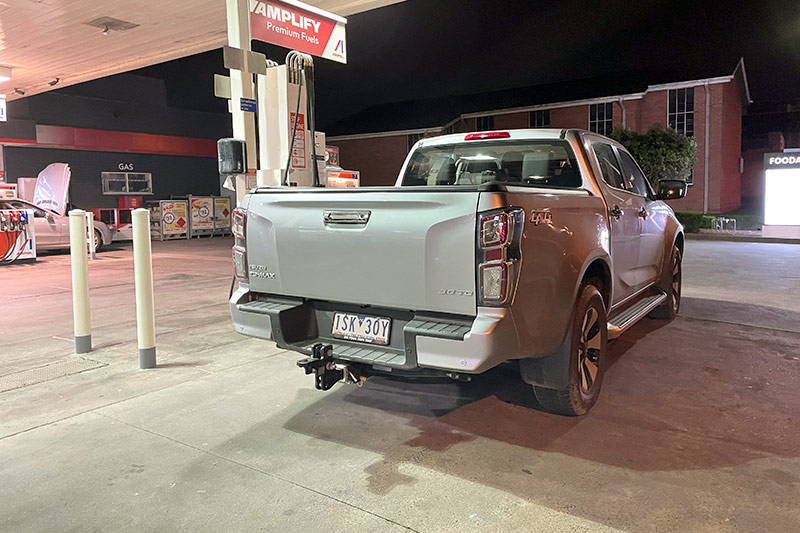 I think most people would be pleased with the combination of towing performance, the technical sophistication of the IDAS safety suite, and the interior fitout.
I think most people would be pleased with the combination of towing performance, the technical sophistication of the IDAS safety suite, and the interior fitout.
Engine: Four-cylinder 3L turbo-diesel four-cylinder
Max power: 140kW at 3600rpm
Max torque: 450Nm between 1600 and 2600rpm; 300Nm at 1000rpm
Transmission: Six-speed automatic
Length: 5.27m
Width: 1.87m
Wheelbase: 3.123m
Wheels: 18in alloy with 265/60R18 Bridgestone 684II HT tyres
Ground clearance: 240mm
Kerb weight: 2112kg
Gross Vehicle Mass: 3100kg
Gross Combined Mass: 6000kg
Towing capacity: 3500kg
Maximum towball mass: 350kg
Roof load capacity: 100kg
Chassis: Separate, full-length chassis with eight cross members
Front suspension: Independent, high-ride, coil springs, gas shock absorbers, upper and lower wishbones, stabiliser bar
Rear suspension: Alloy-steel overslung long-span semi-elliptic leaf springs, gas shock absorbers
Fuel tank capacity: 76L
Wading depth: 800mm
Warranty: Six years/150,000km
Servicing: Seven years’ capped price when serviced through IUA dealers
Metallic paint
Towbar wiring harness with 12-pin plug
Electronic brake controller
Electric roller tonneau cover
Recommended drive-away: $63,500 (includes metallic paint)
Price as shown: $74,851.39 (drive-away, includes stamp duty)
The post Isuzu D-MAX: Long Term Test Wrap-Up appeared first on GoRV.
Source: https://www.gorv.com.au/isuzu-d-max-long-term-test-wrap-up/

